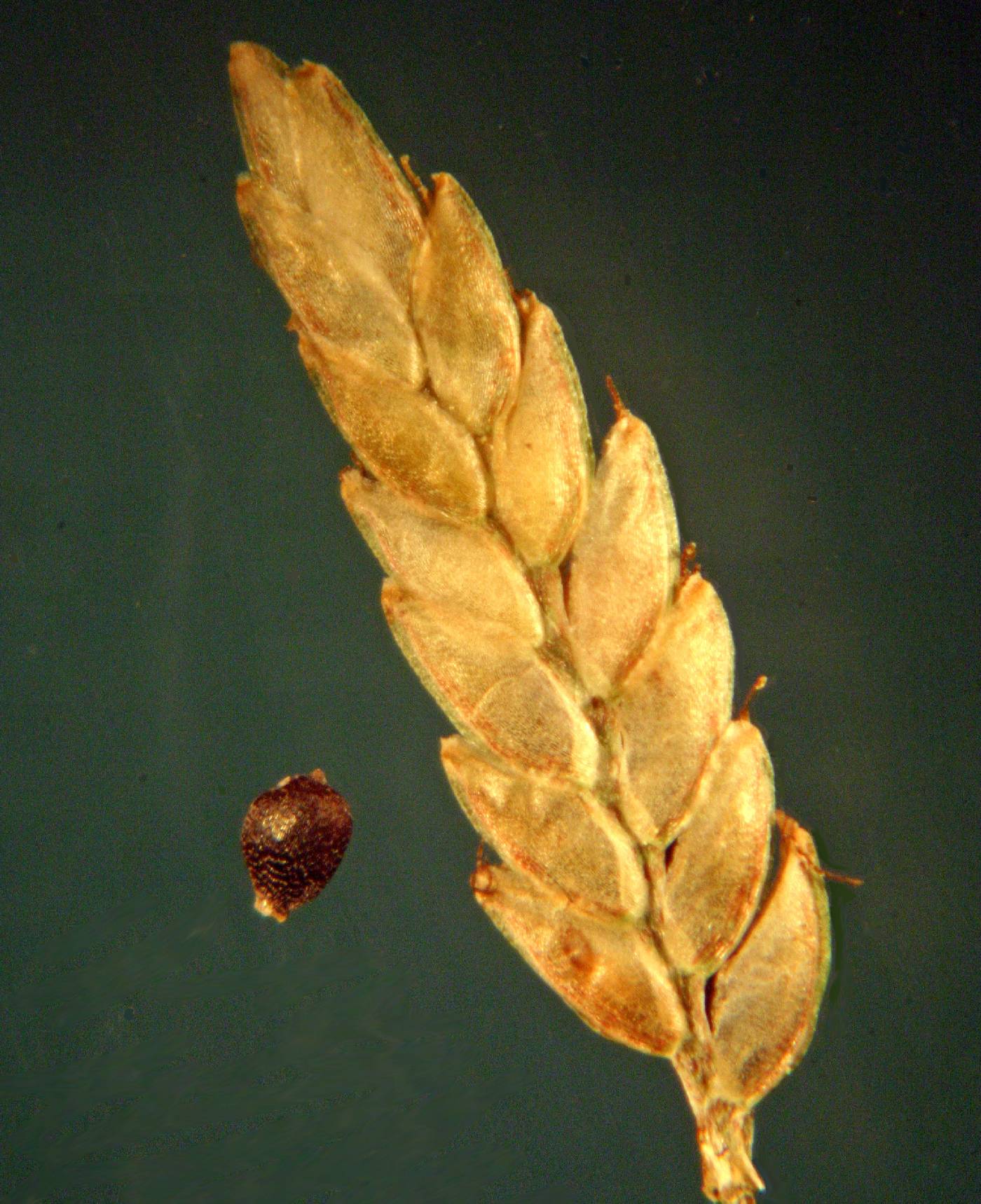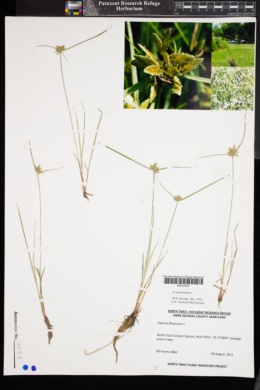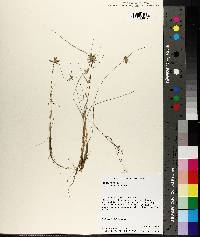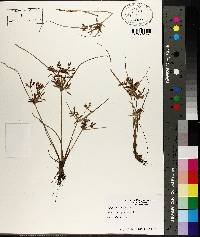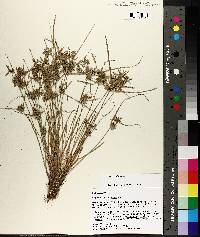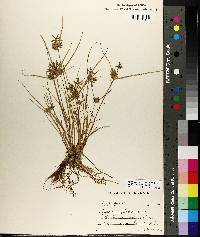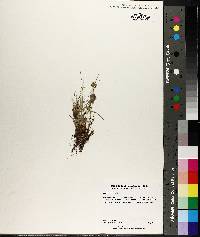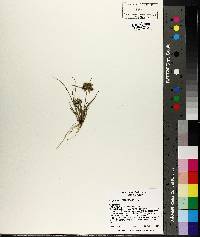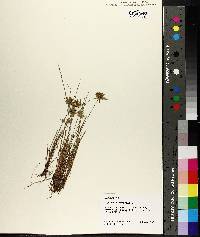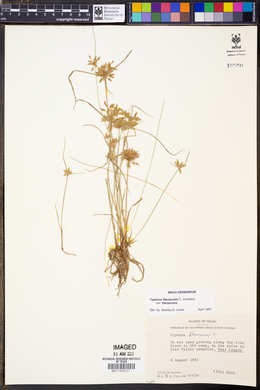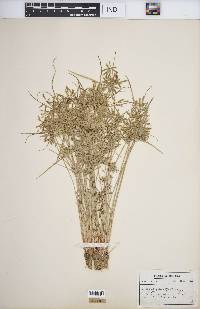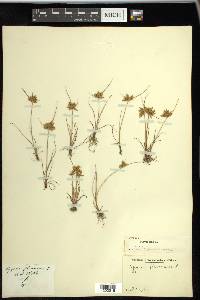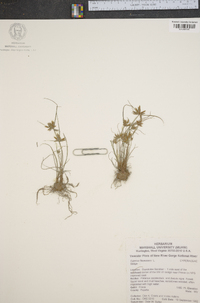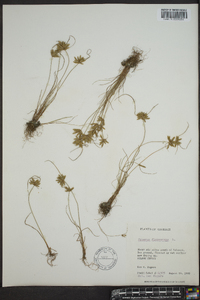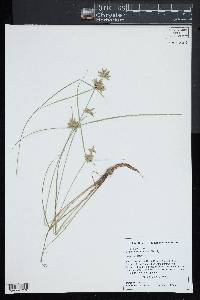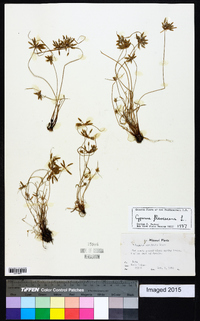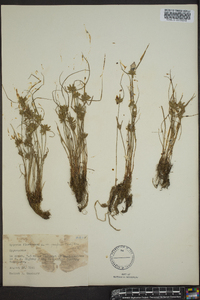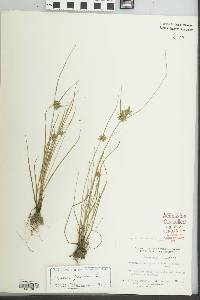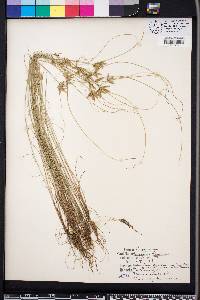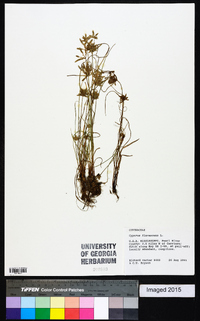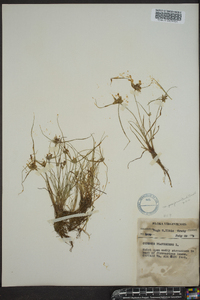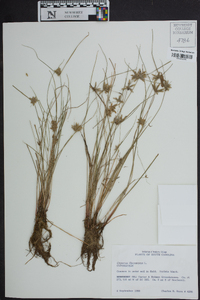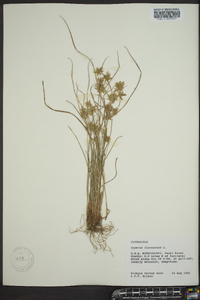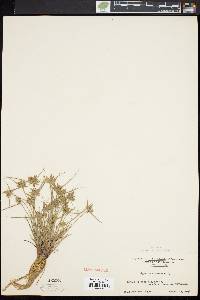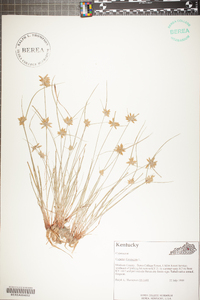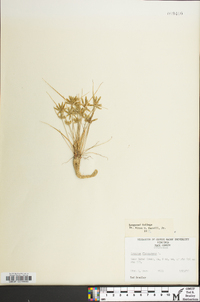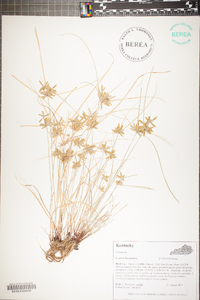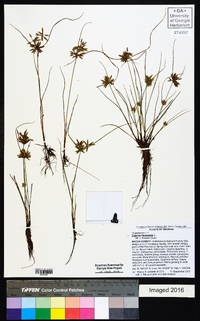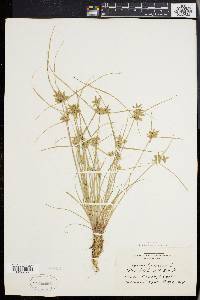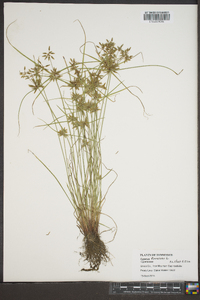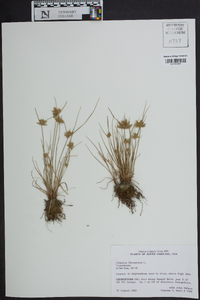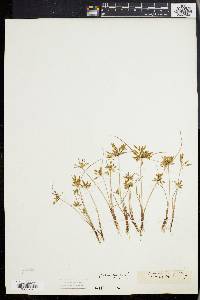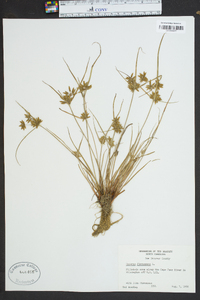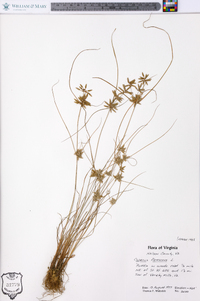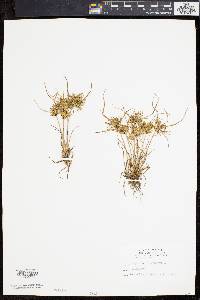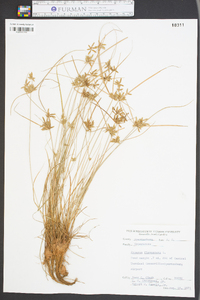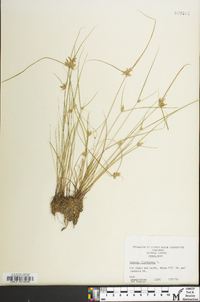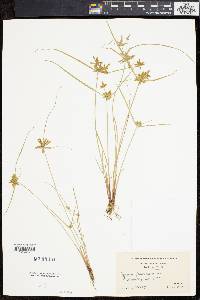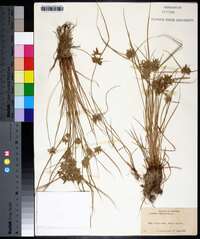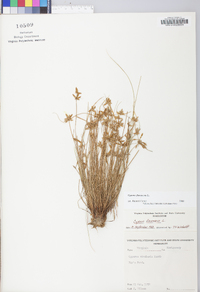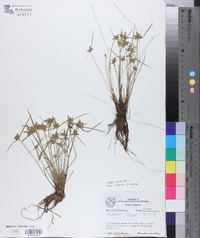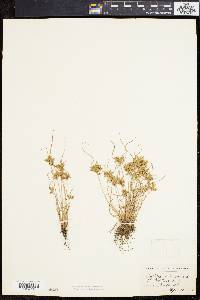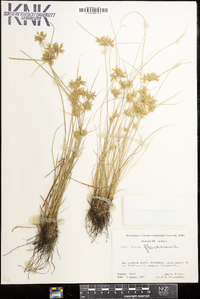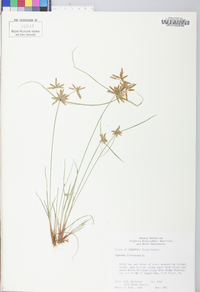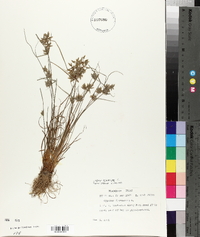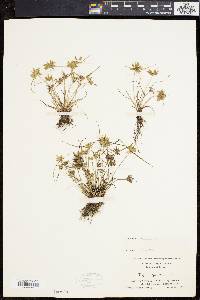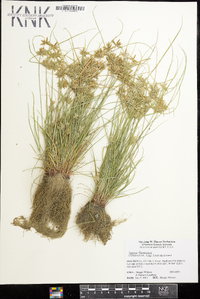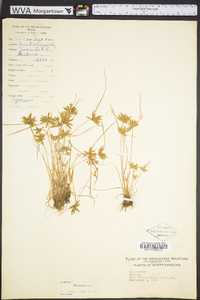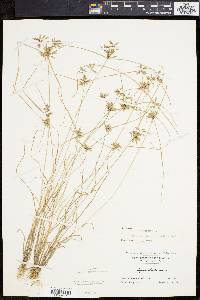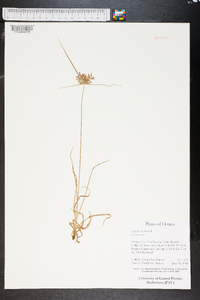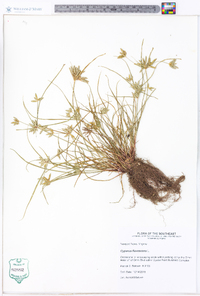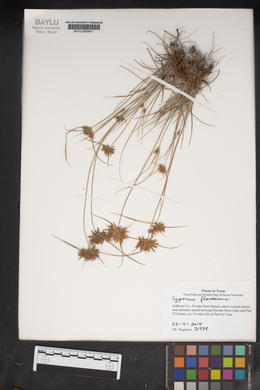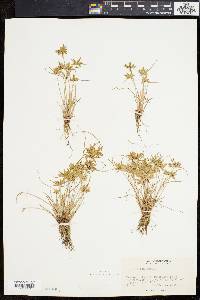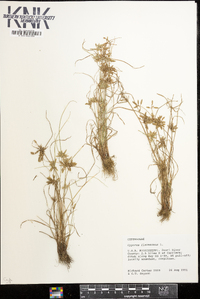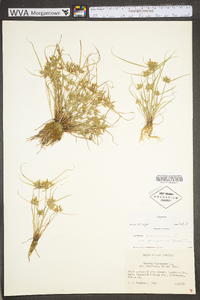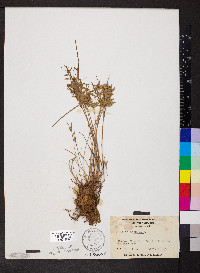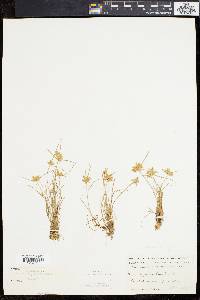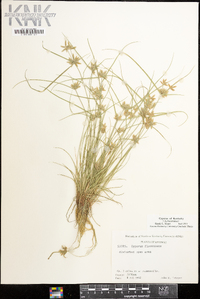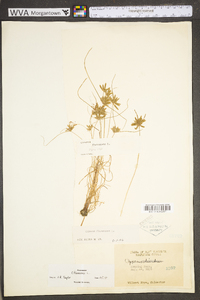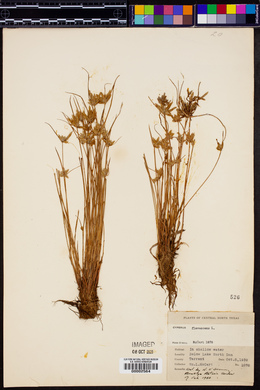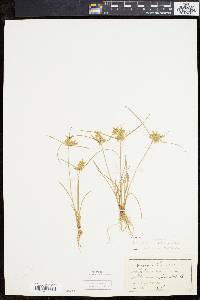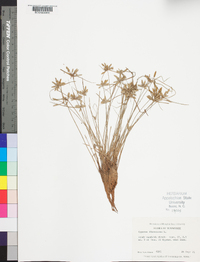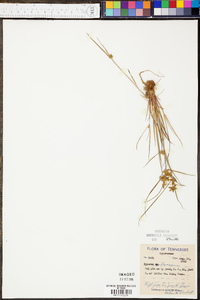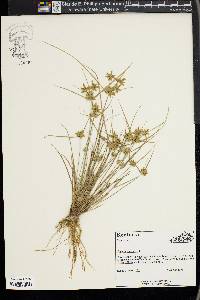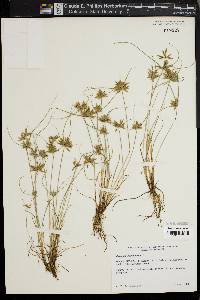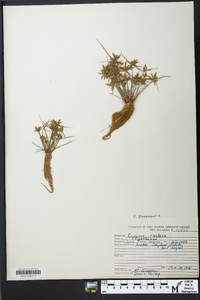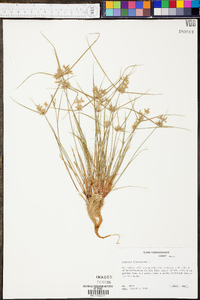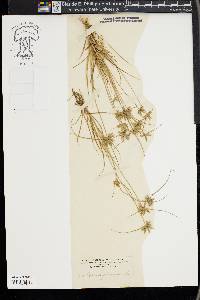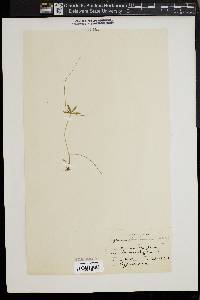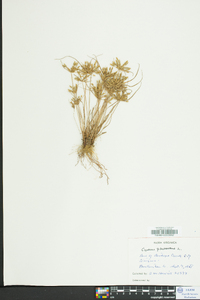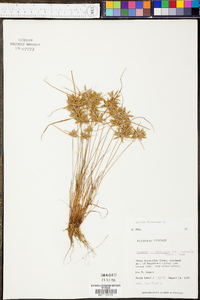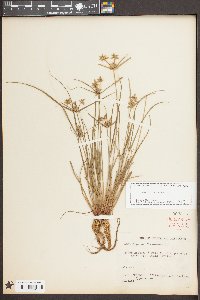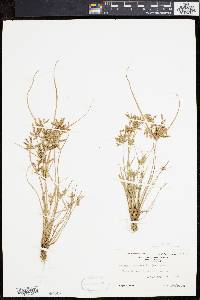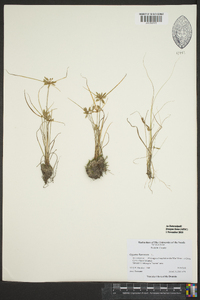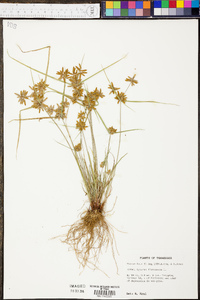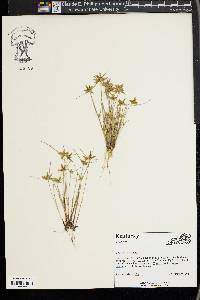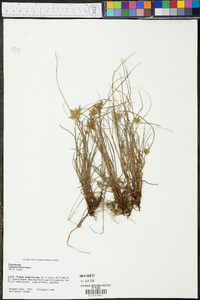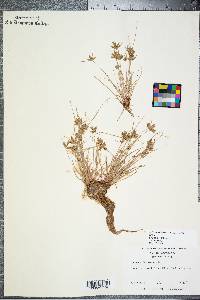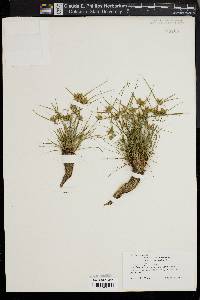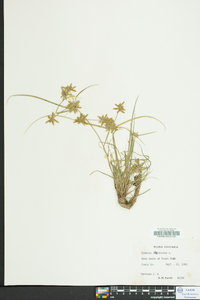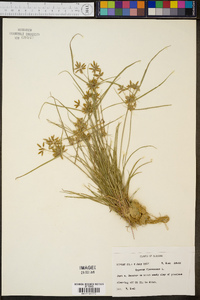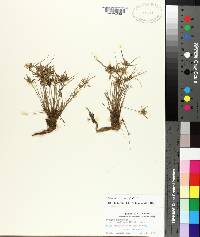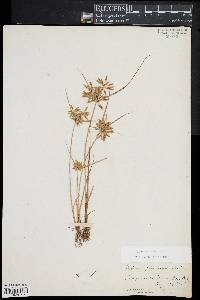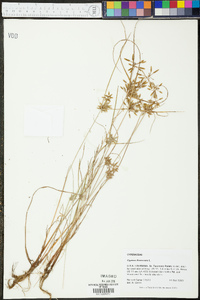Cyperus flavescens
|
|
|
|
Family: Cyperaceae
Yellow Flat Sedge, more...yellow flatsedge
[Cyperus abyssinicus Hochst. ex A.Rich., moreCyperus flavens Pall., Cyperus flavescens var. abyssinicus (Hochst. ex A.Rich.) C.B.Clarke, Cyperus flavescens var. poiformis , Pycreus flavescens Beauv. ex Rchb., Pycreus rehmannianus C.B.Clarke] |
Herbs, annual, cespitose. Culms trigonous, (2-)4-30 cm × 0.4-2 mm, glabrous. Leaves 1-5, (blades often absent, base of culm with 1 reddish sheath bearing minute blade tooth 1-2 mm), (3-)10-18 cm × (0.5-)1.5-2(-2.6) mm. Inflorescences: spikes 1-3, ovoid or ± digitate, 10-30 × 8-26 mm; rays 1-4(-6), 0.5-3(-9) cm; bracts 2-3, approximately horizontal, 1-12 cm × 0.5-2.5 mm. Spikelets 1-6, compressed, oblong-lanceoloid, 5-15 × (2-)2.3-2.8 mm; floral scales (4-)8-24, closely imbricate, laterally yellow to yellowish brown, margins light brown to clear, medially green, laterally ribless, medially 2-3-ribbed, 2-keeled basally, ovate, (1.5-)1.8-2.2 × 1.8 mm, apex obtuse. Flowers: stamens 3; anthers 0.4 mm, connectives not prolonged; styles 0.5-1 mm; stigmas 0.5-0.8 mm. Achenes jet black to reddish brown, slightly stipitate, obovoid, 1-1.2 × 0.8 mm, apex apiculate, surface with network of rectangular longitudinally elongate cells and transverse undulations. Fruiting summer-early fall. Damp, often disturbed soils; 0-800 m; Ont.; Ala., Ark., Calif., Del., D.C., Fla., Ga., Ill., Ind., Kans., Ky., La., Md., Mass., Mich., Miss., Mo., N.J., N.Y., N.C., Ohio, Okla., Pa., S.C., Tenn., Tex., Va., W.Va.; West Indies; South America; Eurasia; Africa. North American populations have been distinguished as Cyperus flavescens var. poiformis; their taxonomic separation was not supported by M. L. Corcoran´s (1941) careful study. Plants of Mexico and Central America consistently have purplish rather than yellowish floral scales and may be recognized as C. flavescens var. piceus (Liebmann) Fernald (G. C. Tucker 1983, 1994).
Annual herb with rhizomes and runners, tufted 4 - 30 cm tall Leaves: one to five (or absent, then reddish sheath bearing a 1 - 2 mm long tooth), alternate, upright, 10 - 18 cm long, 1.5 - 2 mm wide, linear, parallel-veined, keeled beneath, with a sheathing base that encloses the stem. Inflorescence: consisting of one to three terminal spikes, subtended by spirally arranged leafy bracts. Bracts two to four, more or less horizontal, unequal, 1 - 12 cm long, 0.5 - 2.5 mm wide, much longer than inflorescence. Rays (branches of inflorescence) one to five, 0.5 - 3 cm long. Spikes 1 - 3 cm long, 1 - 2.5 cm wide, egg-shaped or more or less palmate, consisting of one to fifteen spikelets. Flowers: minute, in the axil of a floral scale, lacking sepals and petals. Stamens three, exserted. Anthers under 0.5 mm long. Pistil one. Style 0.5 - 1 mm long. Stigma about 0.5 mm long. Fruit: a one-seeded achene, slightly stalked, black to reddish brown, about 1 mm long and 0.5 mm wide, reverse egg-shaped with a small, slender point at the apex, lenticular (lens-shaped). Seed with a thin, non-adherent wall. Culm: 4 - 30 cm long, 0.5 - 2 mm wide, triangular in cross-section, solid. Spikelets: 0.5 - 1.5 cm long, 2 - 2.5 mm wide, compressed, narrowly lance-shaped, subtended by two small bracts, with eight to twenty-four floral scales. Scales spirally arranged and overlapping, yellow to yellowish brown with light margins, greenish down the middle, 1.5 - 2.5 mm long, to about 1.5 mm wide, egg-shaped with a rounded apex, two-keeled basally, two- to three-ribbed, lowest one empty. Similar species: No information at this time. Flowering: mid-August to early September Habitat and ecology: Along ponds, lakes, and in other wet areas. Occurence in the Chicago region: native Etymology: Cyperus is the ancient Greek word for sedge. Flavescens means "becoming yellow." Author: The Morton Arboretum Tufted annual 0.5-3 dm; cauline lvs short and usually erect; bracts 2-4, much longer than the infl; rays 1-5 on peduncles to 2(-5) cm; spikelets 5-15, 10-15 נ2-2.5 mm; scales yellowish or stramineous with narrow hyaline margins, broadly ovate, 1.7-2.5 mm, obtuse; stamens mostly 3; achenes lenticular, black, obovate, 1 mm, apiculate, at maturity marked (at high magnification) with elongate superficial cells and numerous pale, irregular, transverse lines. Wet soil; pantrop., n. to Mass., Mich., and Mo. Gleason, Henry A. & Cronquist, Arthur J. 1991. Manual of vascular plants of northeastern United States and adjacent Canada. lxxv + 910 pp. ©The New York Botanical Garden. All rights reserved. Used by permission. From Flora of Indiana (1940) by Charles C. Deam Rare in northern Indiana and infrequent in the southern part in wet, sandy soil on bars in streams and ditches, in the outlets of springs, along ditches, and about artificial ponds. |

